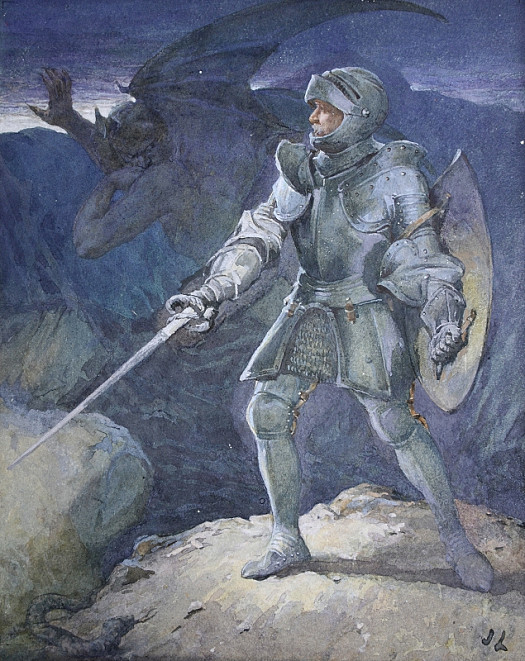John Lawson was born in Dunfermline, Fife, Scotland, the youngest of the ten children of Robert Lawson, a linen weaver, and his wife Ann (née Kirk). He was baptised on 10 June 1838. By 1850, the family was living at 9 Appin Terrace.
Nothing is known of Lawson’s education, and he is first appears as an artist when he begins to exhibit works at the Royal Scottish Academy in 1857.
His two exhibits of 1858 comprised the horse and dogs of Sir Arthur Halkett of Pitfirrane Castle, Dunfermline, and a portrait of the sculptor, Amelia Paton, the sister of the artists, Noel and Waller Hugh Paton. The Patons also came from Dunfermline, and were the children of a damask designer, so it is possible that they and the Lawsons grew up together.
On 13 July 1858, Lawson married Martha Carragher, the daughter of a Dunfermline labourer, in Edinburgh. It has been suggested that they married away from Dunfermline because Martha was already expecting Elizabeth, the first of their five children, who was born in the December. Initially, they returned to Dunfermline, and lived at Queen Anne Place, where their second child, Louisa, was born. However, by 1861, they had moved to Edinburgh, and were living at 76 Rosemount Buildings. At that stage, Lawson was describing himself as a ‘glass stainer’s designer’, and family tradition has it that he contributed to the renewal of the stained glass windows in St Giles Cathedral.
However, soon after 1863, by which time he was living at 31 Dean Street, Lawson also established himself as an illustrator, initially working mainly with the Edinburgh publisher, William P Nimmo, and also contributing to periodicals, including Once a Week and The Quiver, both published in London. His early illustrative style has been compared to that of ‘Paton, Frederick Sandys, Frederick Shields, and Edward Poynter – large figures, exactingly placed lines, the Dürer/Rethel woodcut school’ (Gregory R Suriano, The Pre-Raphaelite Illustrators, New Castle: Oak Knoll Press/London: The British Library, 2000, page 291).
During the 1860s, Lawson became the father of three further children, Edwin (born 1862), Williamina (born 1867) and Noel Paton (born 1869), the name of the last surely confirming a close friendship between the Patons and the Lawsons. By the end of the decade, the family was living at 32 Upper Gray Street, and Lawson was describing himself as both ‘artist on hand’ and ‘designer for stained glass’. However, at some point during the 1870s, they moved to London. Lawson worked with a number of publishers, including George Routledge and, in 1876, exhibited at Ernest Gambart’s French Gallery, in Pall Mall, alongside Noel Paton, among others.
By 1881, both Lawson and his eldest child, Elizabeth, were working as artists from 23 Glebe Place, Chelsea. Gaining a reputation as an illustrator of children’s books by the early 1880s, Lizzie Lawson married the writer and editor, Robert Ellice Mack, in September 1886, who would become Director of the London office of the publisher, Nister, in 1888. At various times, she and her husband worked both together and with her father.
By 1891, and at least until 1901, Lawson and his wife, Martha, lived at the Italian Villa, 62 Hurlingham Road, Fulham, and at that time he described himself as ‘artist, painter, sculptor’. For much of that period, Lizzie – who gave birth to her daughter, Jenny, in 1890 – lived at the same address, and continued to do so until at least 1906. However, by the turn of the century, her husband, Robert, was based in Edinburgh and working for the Scottish publisher, Nelson’s. Her mother, Martha, certainly died on 26 June 1905, but references to her father, John, fade from the records. His last published illustrations are likely to be those for Maria A Hoyer’s The Friend of Little Children, which appeared in 1902. The colour plates are typical of his later style in their sweet sentiment.
Most published entries on John Lawson have confused him with another artist of the same name, a Scottish landscape painter who died at Carmunnock, Glasgow, on 9 September 1909. The present artist died in Bart's Hospital on 13 July 1908.
Further reading:
Forrest Reid, Illustrators of the Sixties, London: Faber & Gwyer, 1928, pages 228-231


